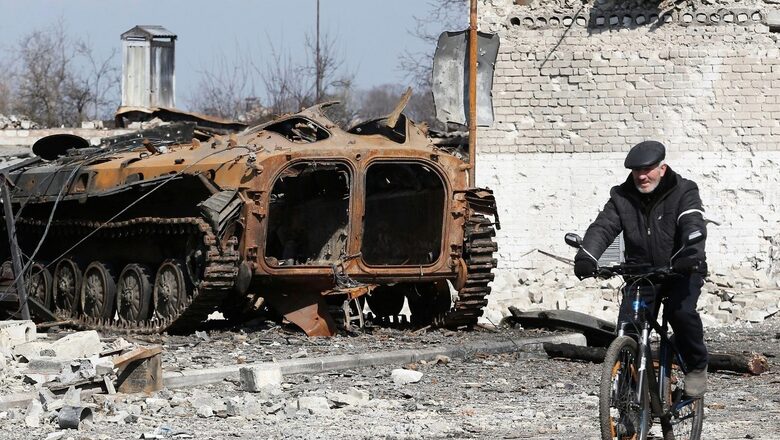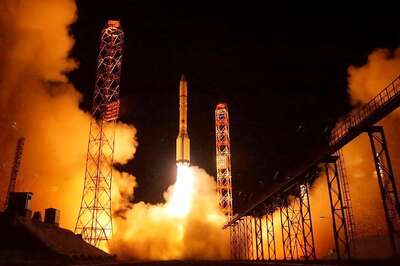
views
A recent investigation has revealed that video-focused social networking platform TikTok is providing users with inaccurate and misleading information regarding the Ukraine conflict within around 40 minutes of signing up for the app, regardless of whether they conduct any searches on it.
Furthermore, it is found that searching for generic terms relating to the war, such as “Ukraine” or “Donbas,” resulted in TikTok proposing many films in its top 20 results that contained misinformation, according to fact-checking tool NewsGuard.
The results by NewsGuard add to a growing body of evidence that TikTok’s lack of effective content labelling and monitoring, along with its ability to drive users to content that keeps them on the app, has made the platform fertile ground for the propagation of misinformation.
In March 2022, a group of six NewsGuard analysts created fresh TikTok accounts and conducted two experiments to replicate normal app usage.
In the first experiment, analysts were given 45 minutes to go through TikTok’s tailored “For You” feed, watching all videos related to the Russia-Ukraine crisis in their entirety but not following any accounts or conducting any searches.
All of NewsGuard’s experts were presented inaccurate or misleading content concerning the Ukraine conflict within 40 minutes of joining TikTok—including both pro-Russian and pro-Ukraine falsehoods.
False information spread by Russia as mentioned by the group of investigators:
• The false claim that footage from the war in Ukraine is fake.
• The false claim that Ukraine is led by a neo-Nazi junta.
• The false claim that the U.S. has bioweapon laboratories in Ukraine.
• The false claim that Vladimir Putin and Russia are not the aggressors in this conflict, and that the U.S. orchestrated the 2014 revolution in Ukraine.
Other misinformation:
• The false claim that U.S. forces are “on the way” to Ukraine.
• The false claim that Putin was “photoshopped” onto footage of a press conference he gave on March 5, 2022, to hide the fact that he was not in Moscow.
• Footage of Ukraine President Zelensky “out there fighting for his country,” which was actually filmed in 2021.
• Footage of the “Ghost of Kyiv” shooting down six Russian jets, which was actually from the Digital Combat Simulator video game.
• Footage of a firefight “by Ukrainian army against Russia,” which actually dates to 2015 and shows Ukrainian government troops fighting pro-Russia rebels in the east of the country.
In NewsGuard’s Russia-Ukraine Disinformation Tracking Center, some of the misconceptions in the videos TikTok’s algorithm sent to analysts had previously been classified as Kremlin propaganda.
For example, a French-speaking analyst was shown a video of Russian President Vladimir Putin—declaring that “today’s neo-Nazis have taken power in Ukraine” and that people in authority in Ukraine bear responsibility for any carnage in the country—within 29 minutes of joining TikTok.
This video had been viewed 1.7 million times and shared over 15,000 times as of March 14.
Within 36 minutes, the same analyst was given a video of a man claiming to be a terrorist, which was published on March 5 and saying that “all the images of this pseudo-war are fake.”
“There are no images coming out of Ukraine, even Russian Spetsnaz soldiers aren’t allowed to have smartphones to film anything – so all the images you see in the media are fake,” the man said.
The film had been seen 153,000 times as of March 14, nine days after it was published.
Other videos, such as video game footage purporting to show real-world views of a Ukrainian fighter jet known as “the Ghost of Kyiv” shooting down 6 Russian planes, gave a deceptive picture of Ukrainian military strength.
Analysts’ feeds were nearly entirely packed with both accurate and fraudulent content relating to the situation in Ukraine by the end of the 45–minute experiment, with no differentiation made between disinformation and reputable sources.
However, in the second experiment, NewsGuard’s analysts had to hunt for generic terms that TikTok users looking for conflict information would use. Ukraine, Russia, War, Kyiv, and Donbas were the search phrases.
When the analysts searched at least one of these terms, TikTok’s search mechanism offered videos that featured false or misleading claims in the top 20 results.
For example, an Italian NewsGuard analyst found the second video of twenty in a search for “Ukraine” that contained the erroneous claim that the war in Ukraine was the result of a genocide in Donbas perpetrated by Ukrainian officials.
When TikTok searched for “Donbas,” it returned a video that incorrectly claimed that neo-Nazis are “everywhere” in Ukraine and that the Ukrainian Government uses the neo-Nazi militias to preserve the rule of Ukraine. The video was the fifth suggestion.
While credible sources are “verified” with a blue tick on TikTok, their content displays among other videos with Kremlin propaganda claims in the platform’s search results, with no further differentiation made. TikTok, for instance, does not provide information regarding the reliability of news sources on its platform.
Moreover, despite TikTok’s removal of Russian state-backed propaganda channel RT from its platform, RT’s Editor-in-Chief, Margarita Simonyan, has the “verified” blue tick on her profile, which has received 13.5 million views in a week from 16 videos about the conflict, according to the Institute for Strategic Dialogue, a think tank that studies extremism.
TikTok is not available in China, despite being owned and run by ByteDance, a Chinese internet firm partially owned by the Chinese government. Chinese users can instead use Douyin, a near-identical service that prohibits “politically sensitive” content, according to the Citizen Lab at the University of Toronto.
TikTok has also been accused of restricting content that does not reflect the views of the Chinese government. Leaked internal TikTok documents from 2019 revealed, for example, that the platform restricted content related to Tiananmen Square, Tibetan independence and other sensitive themes.
The Russia-Ukraine Disinformation Tracking Center at NewsGuard discovered that Chinese state-backed news outlets have carried the Kremlin propaganda allegation that the US has supported bioweapon facilities in Ukraine without question.
With the Chinese government’s vague stance on Russia’s invasion of Ukraine and certain Chinese state-backed websites uncritically repeating Kremlin propaganda, it’s unclear whether TikTok’s ownership by the Chinese will have an impact on the platform’s Russia-Ukraine content decisions in the coming months.
Read all the Latest Tech News and Breaking News here




















Comments
0 comment